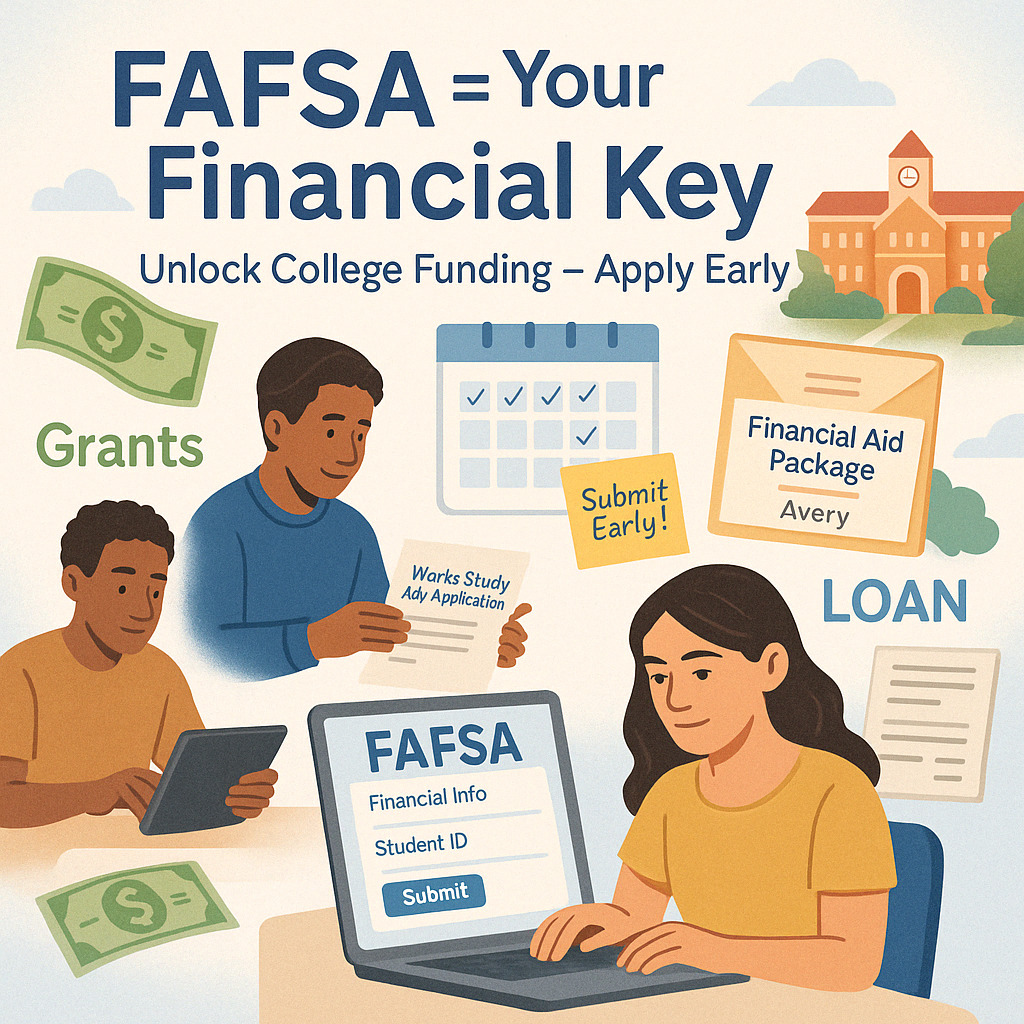fafsa For the millions of Americans attending college and the thousands attending unnecessary graduate school, student loans are an unfortunate but often necessary financial tool, and one of the most trustworthy sources of student loans is the U.S. Department of Education (DOE). Dept of Education student loans are federal loans that are given to students and parents to help pay for college or career school. You apply for these loans through the Free Application for Federal Student Aid (FAFSA) and they offer a variety of benefits compared to private loans, including flexible repayment options, low rates, and eligibility for forgiveness programs.
FAFSA — Understanding Its Role
FAFSA, or the Free Application for Federal Student Aid, is the way to access federal student loans. And by filling out the FAFSA, students supply the required financial information for determining their eligibility for federal grants, work-study jobs and loans from the Dept of Education.
Submitting your FAFSA as early as possible each year is important, because some aid is awarded on a first-come, first-served basis. Colleges and universities use FAFSA data to build a financial aid package that matches your financial picture.
fafsa Dept of Education student loans: types
Under the William D. Ford Federal Direct Loan Program, the Dept of Education provides a number of different student loans. These include:
Straight Subsidized Loans
- For undergraduates who have financial need.
- Unsubsidized: The government doesn’t pay the interest while you’re in school at least half-time, in the grace period, or in deferment.
Clear Unsubsidized Credit
- Open to both undergraduates and grads.
- Not based on financial need.
- Interest starts accruing upon disbursement of the loan.
Direct PLUS Loans
- For graduate or professional students and also for parents of dependent undergraduate students.
- A credit check is required.
- Can cover the full cost of attendance, minus other aid received.
fafsa Direct Consolidation Loans
- Enable you to merge several federal loans into one loan with one monthly payment.
- It makes repay easy but increases the total interest paid.
Federal student loans eligibility criteria
In order to be eligible for Dept of Education student loans, students must:
- Be a U.S. citizen or an eligible non-citizen.
- Be able to provide a valid Social Security number.
- Maintain at least half-time enrollment in an eligible program.
- Be in good standing academically.
- Not be in default on any other federal student loans.
The FAFSA (Free Application for Federal Student Aid) must be filed every year to continue qualifying.
Applying for Federal Student Loans | Step-by-Step Guide
- Set Up a Federal Student Aid (FSA) ID
- Go to studentaid. gov to establish an FSA ID, which is how you log in, sign documents, and access your loan information.
Complete the FAFSA
- Complete the FAFSA form online.
- Some may include the schools where you’re applying.
- Enter your family’s financial information, or use the IRS Data Retrieval Tool.
Take Your Student Aid Report (SAR)
- You’ll get a Student Aid Report, or SAR, summarizing your FAFSA data after it has been submitted. Review it for errors.
Get Your Financial Package
- Your chosen colleges will send you a financial aid award letter that outlines the types and amounts of aid you qualify for — including student loans.
Accept the Loan and Complete Entrance Counseling
- Accept the offered loans, then complete loan entrance counseling and sign a Master Promissory Note to receive your funds.
fafsa Biden Details Income-Based Repayment Plans for Dept of Education Student Loans
Federal loans offer various repayment plans to suit different financial situations:
Standard Repayment Plan
- Fixed payments over 10 years.
- Lowest total interest paid.
Graduated Repayment Plan
- Lower payments at first, increasing every other year.
- Also repaid in less than 10 years.
Extended Repayment Plan
- For people with over $30,000 in federal loans
- Up to 25 years to repay.
Income-Driven Repayment Plans
- Income- and family size-based payments.
- (PAYE, REPAYE, IBR, and ICR)
- Possibly qualifies for 20–25 year loan forgiveness.
Options for Loan Forgiveness and Discharge
One of the greatest benefits of Dept of Education student loans is that they may be forgiven or discharged under some circumstances:
8. Public Service Loan Forgiveness (PSLF)
- Available for government and non-profit employees
- It requires 120 qualifying payments on an income-driven plan.
Teacher Loan Forgiveness
- Forgive up to $17,500 for eligible teachers in eligible low-income schools.
TOTAL AND PERMANENT DISABILITY DISCHARGE
- For those borrowers who are completely and permanently disabled.
Closed School Discharge
- Available if your school shuts down while you’re still enrolled or shortly after you drop out.
Why fafsa Federal Loans Have the Edge over Private Loans
Dept of Education student loans have a lot of benefits over private loans:
- Fixed interest rates.
- Flexible repayment options.
- Options for forbearance and deferment.
- Eligibility for forgiveness and cancellation programs
- Most loans have no credit check (excluding PLUS loans).
Preventing Default, and How to Manage Your Loans
Bankruptcy also can lead to wage garnishment, reduce eligibility for grants based on need, and more. Here are a few strategies for staying focused:
- Use the Loan Simulator on studentaid. gov for guidance on repayment plans.
- Enroll in autopay so that your payments are made on time.
- Keep in touch with your loan servicer for news or if you’re struggling.
fafsa Conclusion
Dept of Education student loans, which are obtained via the FAFSA, are a key lifeline to students seeking a higher education. They provide affordable interest rates and protections, as well as forgiveness options, that aren’t usually available through private lenders. Knowing how to use, handle and pay these loans while making informed choices, will ultimately help you reach your educational goals without excessive debt.
Do your FAFSA today and see all available options of federal aid for a more affordable college experience.


